In late summer the two apple trees in our yard grow heavy. Pretty golden and red fruit fatten and hang thick in the branches.
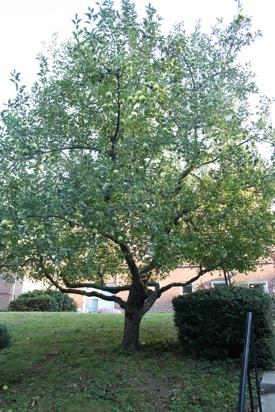
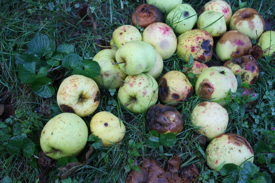
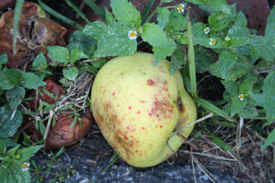
But soon after, the apples fall to the ground and rot. The pesticide-free fruit is pitted, blighted and worm-ridden. And in New York’s suburban land o’ plenty, no one wants imperfect fruit.
It takes a lot of work to selectively gather the apples, cut away the bruises and speckles and prepare the fruit to eat. So I usually don’t.
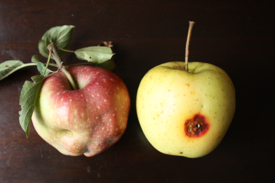
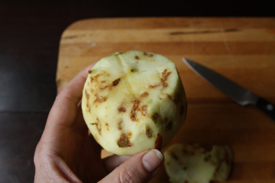
In past years, my guilt was assuaged by our boxer dog, Toby. He loved to eat this mottled fruit. He’d whine pitifully at the door, begging to go out for what to him was miraculous manna fallen from heaven. Toby made any passage through the yard an excuse to nab an apple. Then, with the prize clenched in jaw, he’d hurry back inside to his doggie bed and greedily crunch the windfallen fruit.

More than any other season, autumn reminds us of time’s passage. We feel melancholy, suffering the “crucifixion of the heart with the passing of the forms we love.” (The Hero with a Thousand Faces, Joseph Campbell)
In fall there’s no escaping changing forms: Weather cools, trees shed leaves in glory, fruits fall to the ground. It’s hard not to dwell on autumns past, children grown, a beloved dog gone.
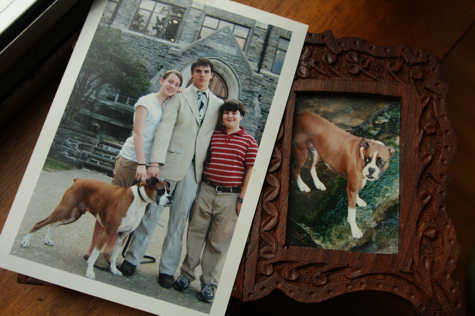
This fall when the apples fell to the ground, Toby wasn’t here to eat them. My shadow companion died last spring.
I didn’t like seeing the apples rotting on the lawn. So this fall I hauled them into the kitchen determined to do something with them.
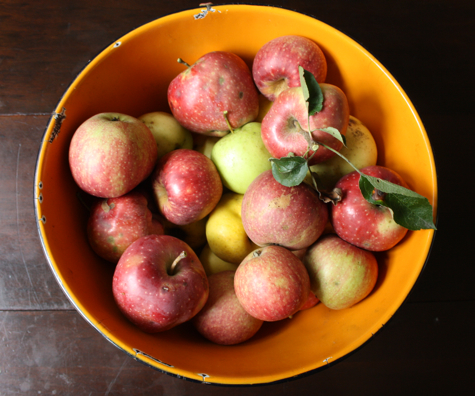
The apples sat there for a few days before a light bulb went on: Apple butter. What a great way to use less-than-perfect-fruit. This conserve is basically cooked-down applesauce made flavorful with generous quantities of spice. It uses very little sugar.
Some cooks use no sugar, relying on the condensed sweetness of the fruit alone. I use a ratio of 1/4 cup sugar to 1 cup of fruit puree—feel free to add more or less sugar to taste. I use Demerara sugar for its full, slightly molassesey taste, but any sweetener works. If using honey, reduce apple cider by one fourth.
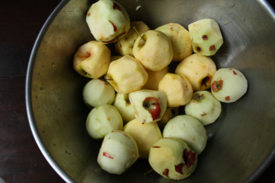
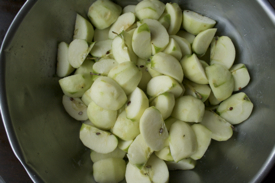
Garam masala, a slightly peppery mix of Indian spices, is what sets this apple butter recipe apart from others. If possible, try to buy whole garam masala found at Indian grocery stores. You can grind it in small quantities at home. Use a mortar and pestle or coffee grinder—make sure you wipe out the grinder with a damp cloth to remove all spices before you brew your next pot of coffee!
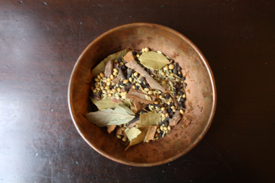
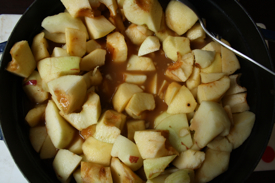
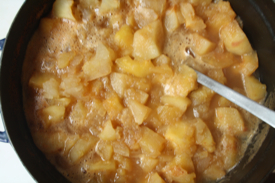
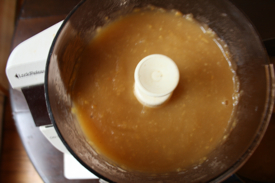
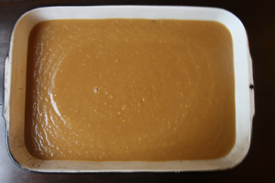
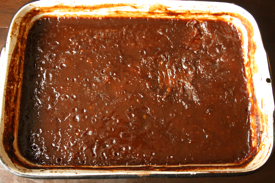
Windfall Apple Butter with Garam Masala
10 pounds apples, (peeled and sliced, about 4 quarts)
Juice of two lemons
4 cups apple cider or unsweetened apple juice
3 cups Demerara or other sugar
2 teaspoons cinnamon
1/2 teaspoon ground cloves
1 teaspoon ground nutmeg
2 teaspoons ground garam masala
- Preheat oven to 300 degrees.
- Squeeze and reserve lemon juice.
- Peel apples, dipping each peeled apple in juice—this prevents the fruit from browning as you work.
- Core and roughly chop apples, tossing them in the lemon juice.
- Place apples in Dutch Oven or large heavy pot. Add apple cider, cover pot and bring to a boil. Reduce flame and simmer fruit until very soft—about 20 minutes.
- Spoon cooked fruit and cider into a food processor and purée until smooth.
- Measure apple puree—you will later add 1/4 cup sugar for every cup of apple purée. I measured about 12 cups of purée from my batch.
- Scrape the puree into a large shallow baking dish and slide the pan into the oven.
- Bake apple puree for an hour, sliding pan out occasionally to scrape pan sides and stir puree, then returning pan to oven.
- In the meantime, if you are using any whole spices—such as garam masala—grind, measure and reserve them now.
- After puree has baked for an hour, remove it from the oven. Add sugar—1/4 cup for every cup of puree you measured after pulverizing in food processor—and spices, stirring to blend.
- Return apple puree mixture to oven and continue to cook for another 1 1/2 hours. Once again, slide the pan out occasionally to scrape pan sides and stir puree, then return it to oven.
- When done, remove the pan from the oven. If you plan on eating the apple butter within the next few weeks, spoon it while hot into airtight containers and jars and store in refrigerator. If you want to keep the apple butter longer than a few weeks, use sterile jars and follow directions for safe canning.
Makes about six cups of apple butter.
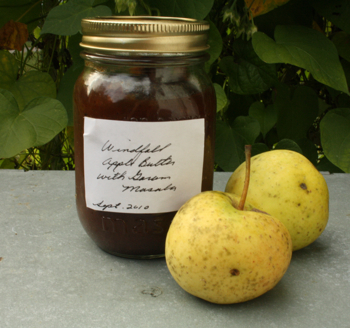


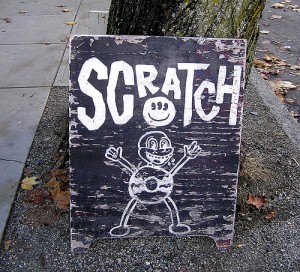
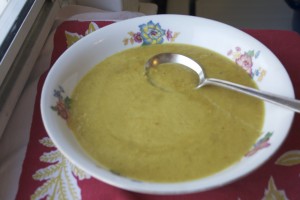
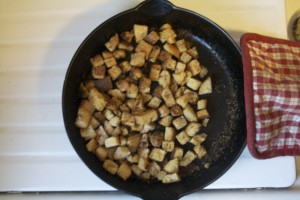
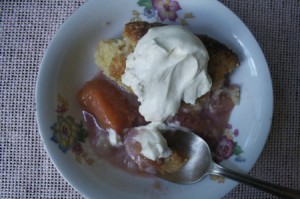
A fresh recipe to cap off a sweet story of the delicious relationship you describe between Toby and the fallen apples. What a lovely way to honor his memory and spirit — I hope it inspires many batches of a yummy sounding apple butter… thank you~
@TheGirlPie Thanks for visiting Copywriters’ Kitchen. I feel newly inspired to use those apples…
this looks utterly beautiful, Lorraine. i’d love to visit your home in NY- first bcc you have a plant which is my favourite in the world- i cannot remem it’s name at the moment- it’s the one next to Toby, second, bec the assortment of liqueurs on the trolley look delicious and three for that apple butter. and of course to have a lovely chat with you 🙂 I am so sorry about dear Toby. he looks like he was a darling dog.
that apple butter looks a-mazing. xx shayma
@Shayma: It would be lovely to mix you up a cocktail and sit chatting next to the ficus tree. I make a mean Mai Tai, but if you prefer something less sweet, I’ll make Whiskey Sours. Hmm…will have to figure out how to work the apple butter into cocktail nibbles…XO L.